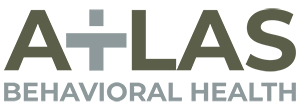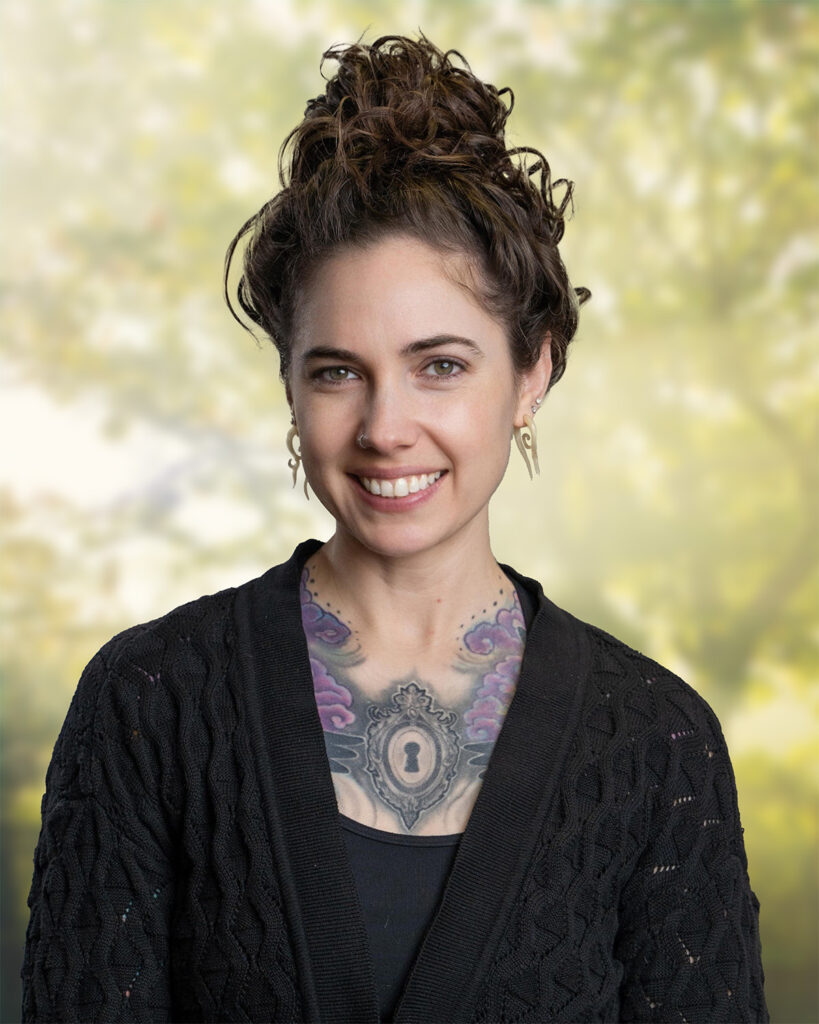Exploring experiential therapy isn’t just about learning new treatment styles, it’s about feeling your way through healing when words fall short. This therapy uses action, movement, and creativity to help people open up, process pain, and find peace.
At Atlas Behavioral Health, we often work with people who struggle to express feelings through traditional talk therapy. Instead, they paint, roleplay, write, or even move to heal what’s buried.
If you’ve tried other therapies and still feel stuck, something like EMDR therapy could be your next step. Sometimes, you don’t need to explain. You just need to express.
What Is Experiential Therapy?
Experiential therapy is like learning by doing, but for your emotions. Instead of just talking, you use activities to unlock feelings and heal from within. It’s therapy you feel, not just explain.
How Experiential Therapy Differs from Talk Therapy
Talk therapy uses words. Experiential therapy uses experience. You might act, paint, write, or even move your body to say things that words can’t. Atlas Behavioral Health often helps clients who feel “blocked” in regular sessions. This approach gives them new ways to open up.
It’s like the difference between reading a recipe and cooking the meal. One gives you information. The other gives you transformation.
Why It’s Called “Experiential” Feel, Do, Heal
The magic here is in the “doing.” When you paint your grief, roleplay your fear, or sculpt your anger, it becomes real and then easier to release. Experiential therapy sessions often spark moments where people say, “I didn’t even know I felt that.”
Even if talking feels scary or confusing, action can say what you can’t.
Who Can Benefit from This Approach?
This therapy works great for people with trauma, anxiety, grief, or those stuck in old habits. Teens, adults, and even couples can benefit. If you’ve tried talk therapy but still feel stuck, vulnerability in recovery might be your path forward.
People dealing with addiction, emotional numbness, or loss also find deep relief through action-based healing.
Types of Experiential Therapy Techniques
This therapy isn’t one-size-fits-all. You can paint, act, move, build, or connect with animals. The point is expression. Below are some popular ways people “experience” their healing.
Art and Music Therapy
Art and music therapy are perfect when words feel too big or too small. Drawing your anger or playing your sadness can free emotions locked inside. During outpatient mental health treatment in Atlanta, these creative therapies are often mixed with trauma work for deeper healing.
A woman once painted her trauma as a tornado, and finally felt seen.
Roleplay, Gestalt, and Psychodrama
Ever wanted to say something to someone who hurt you, but couldn’t? In psychodrama, you get to act it out. Roleplay lets you safely express hard truths, and Gestalt therapy lets you “speak” from parts of yourself, like your inner child or anger.
Atlas Behavioral Health often uses these tools when talk therapy hits a wall. Acting it out can help let it go.
Equine-Assisted Therapy and Nature-Based Healing
Horses don’t judge. They don’t talk, they feel. That’s why equine therapy is powerful for trauma and PTSD. Clients learn trust, patience, and calm just by interacting with animals.
Even a quiet walk in nature, used in therapy, can lower anxiety and build self-awareness. It’s a movement with meaning.
Somatic and Movement-Based Work (e.g., breathwork, yoga)
Trauma lives in the body. That’s why movement helps. Breathwork, dance, and yoga are somatic tools, they let your body “speak” what your mouth can’t. One client said, “I cried after a single breath, and didn’t even know why.”
When paired with signs of alcohol abuse and seeking help, somatic work often clears deep emotional layers.
What Happens in an Experiential Therapy Session?
So what does this look like? A session might include paint, music, props, deep breathing, or even just quiet time. It’s guided, safe, and built around how you feel and heal best.
Step-by-Step Example of a Session
Imagine you’re working through grief. Your therapist might ask you to choose colors and draw what your sadness feels like. Then, you talk about the picture. That small step opens a big door.
Atlas Behavioral Health sometimes includes nature walks, roleplay, or even quiet sitting as part of this therapy.
No two sessions look the same, and that’s what makes them so personal.
Group vs. Individual Settings
Some people feel better in group settings. Others feel safer in one-on-one time. In a group, you might do shared art or act out scenes together. It builds a connection. In a private session, it’s just you and your therapist, quietly working through your feelings.
Both ways work. You choose what fits you. According to the American Psychological Association, both group and individual therapy offer unique benefits, and Atlas programs often offer both options so you can find your path.
Common Reactions and Emotional Releases
Tears. Laughter. Stillness. Even shaking. Sometimes silence says more than words. These are normal reactions. Your body often speaks before your brain can explain.
During healing, it’s okay to feel deeply. If that feels scary, you might find comfort in reading how others handled vulnerability in recovery. You’re not alone in this.
What to Expect After a Session
Experiential therapy sessions can feel powerful. Afterward, your brain might be quiet, or your body might buzz with emotion. This is normal. Healing isn’t always loud, sometimes, it’s the pause that says the most.
Processing Emotions Between Sessions
Sometimes after therapy, you feel peaceful. Other times, things come up, memories, tears, even dreams. Atlas Behavioral Health encourages clients to rest, hydrate, and write things down after intense work.
If something feels off days later, it’s okay. That’s part of vulnerability in recovery. Your body is letting go.
Tips for Self-Care After Deep Work
-
Take a warm shower or bath
-
Drink water and eat grounding foods
-
Spend time outside or journal
-
Avoid heavy talks right after a deep session
Even a short walk or cozy movie can help calm your mind. These small actions are part of the healing.
When to Reach Out for Extra Support
Not every session ends easily. If things feel too heavy or unclear, don’t wait. Outpatient mental health care is designed to help you move through tough emotions with support.
You’re not expected to process it all alone.
Mental Health Conditions Treated with Experiential Therapy
Experiential therapy isn’t just for one type of struggle. It’s used in many areas, especially when trauma, addiction, or grief feel too deep to describe in words.
Trauma and PTSD Recovery
When you’ve been through something painful, talking about it can feel unsafe. That’s where experiential therapy shines. Activities let you express without revealing. Atlas Behavioral Health often uses art, movement, and nature-based therapy in trauma treatment.
Even painting a memory without talking can begin the healing process.
Addiction and Emotional Release Work
In addition, the body holds stress. The mind avoids pain. Therapy that includes action, like roleplay or breathwork, helps break the cycle. During early recovery, clients often feel shut down. But through emotional processing activities, they start to reconnect.
It’s about more than staying sober. It’s about feeling whole and for those navigating unique emotional journeys, LGBTQ-affirming therapy can offer a space where healing feels safe, personal, and authentic.
Depression, Anxiety, and Grief Support
Sadness can be hard to name. Anxiety hides under silence. With experiential therapy, your hands, body, and breath say what your mouth won’t. One woman sculpted her grief. A teen danced through fear. And both found peace.
Depression treatment offered through outpatient programs at Atlas is built to hold those emotions gently, with care.
How Experiential Therapy Supports Long-Term Healing
Healing isn’t always fast, but experiential therapy often starts shifts that last. It rewires how you feel, react, and connect. The goal isn’t just insight. It’s a transformation.
Why It Works When Words Don’t
Some stories hurt too much to say. So instead, you move. You paint. You act. These actions speak in ways words can’t. That’s why experiential therapy is often used when talk therapy hits a wall. Our team at Atlas uses these tools when emotions feel stuck and words fall short.
If talking feels flat, try doing instead.
Rewiring Emotional Responses Through Action
When you express through movement or art, your brain starts making new patterns. Instead of shutting down or lashing out, you build a path to calm. With time, your reactions shift. You breathe first. You speak second.
These body-led breakthroughs are especially helpful in depression work. Our facility supports depression treatment through movement-based healing for clients who can’t verbalize what they feel.
Therapists at Atlas Behavioral Health often see emotional habits change after just a few sessions.
Case Example: From Numb to Empowered
One client came in feeling numb. Words didn’t work. But she cried for the first time in years through painting, then drama therapy. “I didn’t know I needed that,” she said. That’s what healing looks like sometimes: slow, real, unexpected.
Experiential Therapy in Addiction Recovery Programs
Addiction recovery isn’t just about quitting a substance, it’s about learning to feel again. Experiential therapy helps people safely reconnect with emotions they’ve numbed for years.
Breaking Patterns Through Active Expression
In recovery, Atlas Behavioral Health uses experiential tools like art, drama, and body movement. These techniques help clients release pain stored in their bodies.
One man in early sobriety couldn’t name his emotions, but when he wrote a letter to his addiction and acted it out, everything changed. That moment unlocked healing. That’s why our programs support expressive tools across challenges, whether it’s alcohol or synthetic THC misuse.
Used Alongside CBT, DBT, and Trauma-Informed Care
Experiential therapy doesn’t replace other methods; it adds to them. CBT gives thoughts a structure. DBT builds skills. But experiential work helps people feel what they’re trying to say.
During Sober September, many people realized that movement and creative expression helped keep them grounded alongside structured support.
Outpatient programs in Atlanta often combine these for deeper results. This mix helps clients find peace in both mind and body.
Why Experiential Methods Help in Early Sobriety
In early recovery, people are raw. They might feel numb, angry, and lost all at once. Through activities, they express those feelings without judgment. That’s why Atlas Behavioral Health includes experiential therapy in many treatment paths.
Staying sober through holidays, grief, or emotional triggers is tough, especially during high-risk times. But expressive therapy builds emotional tools that last.
You don’t just stay sober, you learn to feel safe being yourself again.
Comparing Experiential Therapy to Other Modalities
Not every therapy works the same way. Some are brain-focused. Some are body-focused. Experiential therapy stands out because it uses action, emotion, and creativity to lead the way.
Experiential Therapy vs. CBT
CBT(Cognitive Behavior Therapy) teaches you to challenge thoughts. Experiential therapy asks you to feel them. Atlas clients who struggle with overthinking often find relief when they try something expressive, like roleplay or sculpture, instead of another worksheet.
For people stuck in their heads, doing helps more than thinking.
Experiential Therapy vs. DBT
DBT is great for learning skills like emotional control. But some emotions need to be felt, not fixed. That’s where experiential therapy comes in. Outpatient sessions may combine DBT with expressive tools and even medication management to help you hold space for big feelings without shutting down.
It’s like building a container strong enough for your whole truth.
Experiential Therapy vs. EMDR
EMDR targets trauma through eye movement and memory recall. It’s powerful, but not for everyone. If memories are too foggy or words too scary, experiential work creates a safe path forward. At Atlas Behavioral Health, some clients start with experiential tools before moving into dual diagnosis treatment.
When you can’t speak it, you can still move through it.
When to Combine Modalities for Stronger Outcomes
Sometimes, the best therapy uses more than one tool. Mixing talk therapy with action-based work leads to deeper healing. Experiential therapy isn’t better than CBT or DBT, it’s just different. And together, they’re even stronger.
Is Experiential Therapy Right for You or a Loved One?
You don’t have to be an artist or actor to try this. You just have to be willing to feel something real. If talk therapy hasn’t worked, or if emotions feel stuck, this might be what your mind and body need.
Signs You Might Benefit From It
Do you feel stuck in therapy? Avoid hard topics? Cry only when you’re alone? Then experiential therapy might help. Am I an addict? Understanding substance use and seeking support is something many people ask themselves before they find breakthroughs through expressive healing.
You don’t need the perfect words, just a safe, creative space.
When to Try It With Other Therapies
This therapy works beautifully with other treatments, whether it’s trauma-focused care, grief support, or addiction recovery. In fact, some people begin during big life transitions like Dry January when they start rethinking habits and emotions.
It’s not about choosing one method. It’s about finding what works in combination.
Choosing the Right Experiential Therapist
Every therapist is different. Make sure yours understands how to use movement, roleplay, or art in a safe and trauma-informed way. The Atlas blog offers insights into how our therapists structure this work to fit you, not the other way around.
It’s not about performance. It’s about permission to feel.
Conclusion
Experiential therapy isn’t just a type of treatment. It’s a different way of feeling, learning, and healing, especially when words fall short. For many people, this path brings light into places that talk therapy couldn’t reach.
Atlas Behavioral Health sees clients every day who say, “I didn’t expect to cry just by moving my hands.” But that’s what happens when your body finally feels safe enough to speak.
Whether you’re using art, movement, or roleplay, you’re not just talking about pain. You’re walking through it, and if you’ve felt stuck before, EMDR therapy may help you move past what talk alone couldn’t.
Starting experiential therapy opens new doors. Some people continue it alongside CBT or trauma therapy. Others use it during specific life chapters like grief or recovery.
Our outpatient programs help you take that first step and stay supported after.
No matter how you begin, the most important thing is: you’re not stuck anymore.






